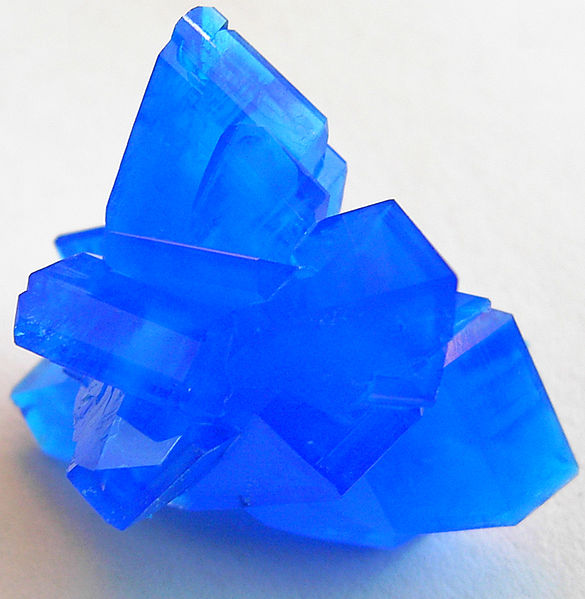Nickel(II) chloride (or just nickel chloride) is the chemical compound NiCl2. The anhydrous salt is yellow, but the more familiar hydrate NiCl2·6H2O is green. Nickel(II) chloride, in various forms, is the most important source of nickel for chemical synthesis. The nickel chlorides are deliquescent, absorbing moisture from the air to form a solution. Nickel salts have been shown to be carcinogenic to the lungs and nasal passages in cases of long-term inhalation exposure.
Hexahydrate
Anhydrous
Color of various Ni(II) complexes in aqueous solution. From left to right, [Ni(NH3)6]2+, [Ni(ethlnedamne)3]2+, [NiCl4]2−, [Ni(H2O)6]2+
Crystals of hexammine nickel chloride
In chemistry, water(s) of crystallization or water(s) of hydration are water molecules that are present inside crystals. Water is often incorporated in the formation of crystals from aqueous solutions. In some contexts, water of crystallization is the total mass of water in a substance at a given temperature and is mostly present in a definite (stoichiometric) ratio. Classically, "water of crystallization" refers to water that is found in the crystalline framework of a metal complex or a salt, which is not directly bonded to the metal cation.
Hydrated copper(II) sulfate is bright blue.
Anhydrous copper(II) sulfate has a light turquoise tint.



![Color of various Ni(II) complexes in aqueous solution. From left to right, [Ni(NH3)6]2+, [Ni(ethlnedamne)3]2+, [NiCl4]2−, [Ni(H2O)6]2+](https://upload.wikimedia.org/wikipedia/commons/thumb/f/ff/Color_of_various_Ni%28II%29_complexes_in_aqueous_solution.jpg/640px-Color_of_various_Ni%28II%29_complexes_in_aqueous_solution.jpg)


